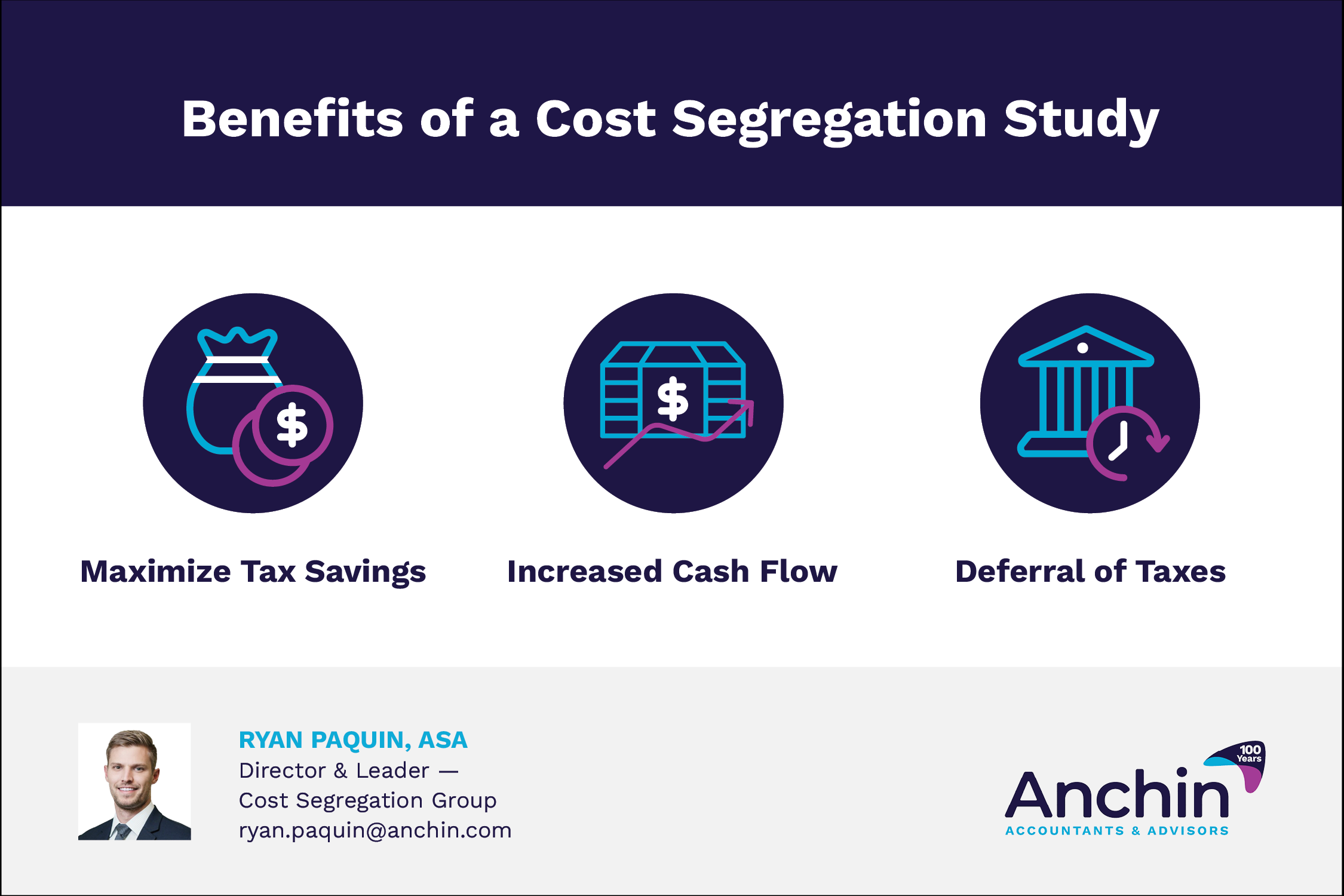Cost Segregation
Overview
Real property owners are not unlike other investors, always looking for ways to reduce income taxes. As we all know, depreciation and amortization are non-cash tax deductions that help a property owner shelter some of his/her income and help match cash flow with taxable income. The first few years of ownership may be the most critical since this is the time you might be making capital improvements to your property in order to maximize its rent roll. This may also be the time you will be incurring leasing commissions and other expenses to lease up your property and decrease the vacancy rate. Since these years are so critical, wouldn’t it be nice to be able to reduce your taxable income and free up tax dollars?
History
Prior to the 1986 Tax Act, there existed a concept called component depreciation. Component depreciation permits a taxpayer to allocate the cost of real property among its various components and assign useful lives to each component, and depreciate each component based on its useful life. Back in 1986 buildings were depreciated over 19 years. The 1986 Tax Act re-vamped the way taxpayers depreciate their assets by introducing the MACRS System for depreciation and did away with component depreciation. Under MACRS, each type of asset is assigned to a class, and the class dictates the life to be used for depreciation purposes. Under the MACRS System, residential buildings now have an assigned a class life of 27.5 years and commercial buildings a 39-year class life. The Hospital Corporation of America (HCA) v. Commissioner tax court ruling of 1997 further paved the way for cost segregation and set the precedent for what it is today.
What is Cost Segregation?
Cost segregation is ultimately the practice of accelerating depreciation from a “real property” life of 39 or 27.5 years to 5, 7, or 15-year lives using an engineering-based study. When a property is purchased or newly constructed, the asset is assumed to be comprised of entirely real property carrying a longer life and depreciated over a straight-line method. Through a cost segregation study, a portion of this basis can be shifted to a different asset class bearing a shortened depreciable life, resulting in an immediate increase in cash flow.
In addition, these shortened lives are eligible for bonus depreciation in newly constructed and acquired properties, allowing a taxpayer to further increase a study’s benefit by effectively expensing a portion or the entirety of the basis upfront.

How Anchin Can Help
Anchin has been at the forefront of cost segregation studies since the landmark HCA ruling. We have performed hundreds of studies valued in excess of $2.5 billion throughout the United States, resulting in $10’s of millions of savings to our clients.
At no cost – Anchin can conduct an upfront estimate to provide a potential net present value savings generated by a full analysis. This estimate provides you with the necessary insight to make an informed decision regarding the economic benefit of conducting a study.
Contact us today to discuss how you could benefit from a cost segregation analysis on your properties, past or present.